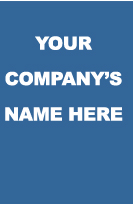MINIMIZING AIRCRAFT OWNERSHIP LIABILITY
最小化飞机持有的相关责任
Aircraft owners and prospective buyers often seek advice on how to reduce the liability risks that are inherent in air¬craft ownership. Prospective buyers often consider setting up a sole purpose limited liability company to own and oper¬ate the aircraft in order to minimize exposure to potential liability. However, under the Federal Aviation Regulations, it is extremely difficult to have a sole purpose entity operat¬ing an aircraft if money is changing hands, even when the exchange is between related parties. Therefore, creating a sole purpose company generally is not recommended unless a more complicated ownership and operational structure is established. The sole purpose LLC may enter into a dry lease exchange agreement with the ultimate user whose primary reason for existence is something other than owning the air¬craft. But even with this type of ownership structure, there is still potential liability. If an incident occurs involving the aircraft, both the owner and operator will likely be named as defendants in any lawsuits which arise out of the incident. Therefore, regardless of ownership structure, aircraft insur¬ance is always important and strongly recommended.
Not all insurance providers and policies are the same. It is important for owners to identify a good aviation insurance broker who can help his clients understand the different types of coverage available and the exclusions that may limit that coverage. It is important to find one qualified broker and allow that broker to canvass the market. It is bad practice to have multiple brokers shopping the market for coverage for the same aircraft. In fact, it may make it impossible for any broker to obtain quotations or binding coverage.
There is a rating system for insurers and it is important for owners to know and understand that rating system. The A.M. Best rating reflects an insurance company’s finan¬cial strength and its ability to meet contractual obligations. The rating categories range from A++ to F (in liquidation). Providers with less than an “A-” Best rating generally should not be considered, and many established brokers will not offer insurance with a lower rating. Owners should also know and understand what exclusions apply to the insurance contract. Some exclusions to be aware of include conversion, embezzlement, violation of usage clauses, and diminution of value.
As is the case with all insurance policies, it is important to have the coverage you need when you need it. Coverage in aviation policies may vary if the aircraft is modified, flight crew qualifications change, normal routes of travel are changed, or travel outside the United States takes place. Before changing flight crews, modifying training programs or traveling outside the country, be sure to check the policy and check with your broker. There have been too many cases where a policy was not in effect due to a change in business practices or travel areas.
The basic types of aviation insurance coverage are physical damage to the aircraft (hull insurance) and aircraft liability insurance. Hull insurance provides for payment to the owner of the aircraft for physical loss of or damage to the aircraft, including engines, propellers, instruments and equipment usually and ordinarily attached to the aircraft. Liability insurance covers the liability to others for bodily injury and property damage resulting from the ownership, maintenance or use of the aircraft. Most liability policies offer coverage for the defense of lawsuits brought against the insured resulting from a covered peril, even if the suit is groundless. The amount of liability coverage, including any deductible, will depend on the owner’s risk tolerance and factors such as the number of passenger seats in the aircraft, average passenger load, passenger profile, and any umbrella policy.
Aircraft liability limits are usually written on a single limit per occurrence basis for bodily injury and property damage liability. This means a fixed dollar amount is established for each occurrence and is applicable for all bodily injury and property damage claims arising out of one occurrence.
飞机机主和潜在买主常常咨询如何降低责任风险,责任风险是持有飞机必然遇到的问题。潜在买主常常考虑为此专门成立一个有限责任公司,以将持有和运营飞机的责任险减到最低。然而,根据美国联邦航空条例,如果有交易,尤其是交易在相关联的各方间进行,要成立这样的公司来运营飞机是相当困难的。因此,不建议成立这样的公司,除非这个公司的所有权和运营结构有详细的设计规划。这种公司可能与最终使用人达成一个干租交换协议,而这个最终使用人却不拥有该飞机。但即使这样的拥有结构,依然有潜在的责任险。因为一旦飞机发生意外,飞机拥有人和运营人都有可能在任何诉讼中成为被告,因为诉讼与这二者都有关系。总而言之,不管哪种飞机拥有结构,飞机保险都很重要,强烈推荐。
并不是所有的保险商和保险条款都是一样的。对于飞机拥有人来说,找到一家好的航空保险经纪人来协助自己确定保险的范围和排除条款是很重要的。找到合格的经纪人让其来细究市场很重要。请多个保险经纪人为同一架飞机的保险工作寻求保险公司并没有好处,实际上,很可能导致没有任何经纪人能得到报价和保单。
每家保险公司都有被评级,对于飞机拥有人来说,了解并明白这个评级很重要。贝氏评级公司(A.M. Best)的评级可以反映一家保险公司的财务能力以及履行合同的能力,字母等级的范围从A++到F(清偿),对应于从优到差的评级。少于一个贝氏 A-评级水平的保险公司基本不要考虑,很多保险经纪商不会提供低评级的保险公司保单。飞机拥有者还应该知道并理解哪些情况不包含在保险合同范围。这些情况包括飞机装备改变、被盗用、违反使用条款及价值折损。
就像所有保险条款一样,选择自己需要的条款是很重要的。飞机不同,航空保险的范围也不同,比如飞机改装、机组素质有变、旅行航路改变或者在美国以外的飞行。在改变机组、修改培训方案和出国飞行以前,别忘了和你的保险商沟通和检查保险的条款。由于运营方式的改变或者旅行地区的改变而引起保险条款无效的情况非常普遍。
航空保险范围的基本险别包括飞机损伤(机身保险)和飞机责任险。当机身遭受损失或伤害,包括发动机、螺旋桨、仪表和通常机上安装的设备,保险公司就会给机主提供机身保险赔偿。责任险的范围除此之外的,包括由于飞机拥有、维修和使用时给他人带来的人身伤害和财产损失的保险。大多数责任险保单不计较过错提供诉讼保护,即使诉讼毫无根据。责任限额,包括任何自付额,取决于机主的风险容忍度,以及其他因素,如飞机上的客座数量、平均客座率、乘客背景及任何的保护伞条款。
飞机责任险赔偿上限通常将人身伤害保险限额和财产损坏保险限额列为同一单一事件。也就是说,每个理赔事件中,相对应的人身伤害和财产损害赔偿都在同一个单一额度内理赔。
Copyright © 2012 by Uniworld, LLC All rights reserved
To request permission to use content,Email China Civil Aviation













